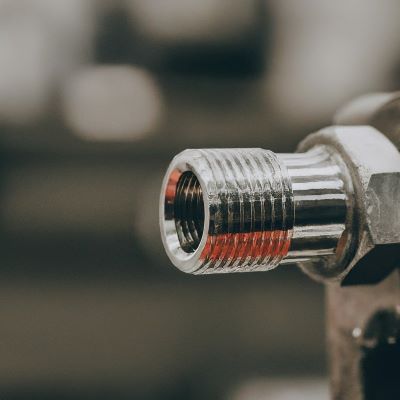Compression tube fittings play a crucial role in fluid and gas systems. They provide a reliable and secure method for connecting tubes and pipes. These fittings are extensively utilized in many different sectors. They are used in hydraulic, pneumatic, and plumbing applications. Their design allows for easy assembly without the need for soldering or welding. This makes them popular for systems that need efficient, flexible, and leak-free connections.
In this intricate network of components, compression tube fittings are the unsung heroes. They ensure fluidity and precision in diverse engineering setups. Let’s delve into the world of compression tube fittings. We will explore their types and applications. We will also explore the essential role they play in seamless fluid conveyance.
What is a Compression Tube Fitting?
In the intricate world of fluid systems, a compression tube fitting is crucial. It facilitates secure connections without compromising efficiency. These fittings are designed to create robust seals in confined spaces. They offer a reliable solution for fluid transfer within various industries.
Types of Compression Tube Fittings
A. Ferrule Fittings
Ferrule fittings use a tapered collar and nut to secure the tubing. They are also known as swaging or compression ring fittings. This type is common in applications where a tight seal is crucial. It’s used in high-pressure environments.
B. Bite-Type Fittings
Bite-type fittings utilize a sharpened ferrule to literally “bite” into the tube. This ensures a secure grip. This design is advantageous in situations requiring resistance to vibration and extreme pressure.
C. Compression Sleeve Fittings
Compression sleeve fittings involve a cylindrical brass or copper sleeve. It is compressed onto the tubing and secured with a nut. This method is widely used for its simplicity and effectiveness. It is especially popular in household plumbing.
D. Flare Fittings
Flare fittings are recognized by their flared tubing ends. They achieve a seal through the compression of the flare against a mating seat. Commonly employed in gas lines, these fittings excel in preventing leaks.
Advantages of Compression Tube Fittings
A. Leak Prevention
Compression tube fittings have an exceptional benefit: they prevent leaks well. These fittings create tight seals. This ensures that fluids remain contained within the designated pathways. It enhances system reliability.
B. Ease of Installation
Unlike some traditional fittings, compression tube fittings offer a hassle-free installation process. Their design eliminates the need for soldering or welding. This makes them a convenient choice for various applications.
C. Versatility in Applications
From high-pressure hydraulic systems to residential plumbing, compression tube fittings showcase their versatility. They are a go-to solution in diverse industries. They can adapt to different materials and configurations.
Choosing the Right Compression Tube Fittings
Here are the factors to consider when choosing the right tube fittings:
Material Compatibility
Understanding the materials involved is crucial for selecting the right fittings. Compatibility ensures longevity and optimal performance.
Pressure and Temperature Ratings
Match the fittings to the system’s pressure and temperature requirements. This guarantees their effectiveness and durability.
Application Specifics
Each application comes with its unique demands. When making a decision, consider factors such as vibration, movement, and space constraints. It is vital.
Applications Across Industries
A. HVAC Systems
Compression tube fittings play a pivotal role in HVAC systems. They ensure the seamless flow of refrigerants and other fluids. They maintain the efficiency of the entire system.
B. Plumbing
Compression tube fittings provide secure connections for water supply lines. Both home and commercial plumbing use them. They help create leak-free and durable plumbing solutions.
C. Automotive
The automotive industry benefits from compression tube fittings in brake and fuel systems. Reliable seals are imperative for safety and performance.
D. Aerospace
Compression tube fittings are invaluable in aerospace applications. Precision and reliability make them essential. They contribute to the seamless operation of intricate fluid systems in aircraft.
Main Takeaways
The compression tube fittings saga reveals key takeaways. These include their ability to create robust seals in tight spaces. Their diverse types cater to specific needs and offer advantages in leak prevention and installation ease.
As industries evolve, compression tube fittings remain a steadfast force. They ensure precise and reliable fluid dynamics. Remember that the critical factors influence the right choice.
Post time: Feb-23-2024


